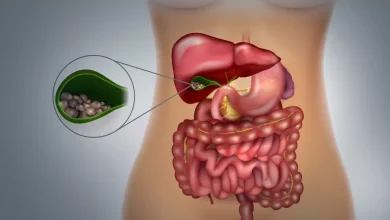All about Arthritis

What is Arthritis?
Arthritis is a disorder that affects your joints & causes pain and inflammation, making it difficult to stay active and sometimes even move. There are several types of Arthritis. Each type has different symptoms and requires different treatment methods. While Arthritis generally affects the elderly, it can also develop in men, women and children regardless of their age. Some of the common areas affected by this condition are
- Feet
- Hands
- Hips
- Knees
- Lower back
Arthritis can sometimes cause permanent joint changes. These changes sometimes are visible, like knobby finger joints, but the real damage can only be discovered on X-rays. Some types of these conditions also can affect the heart, eyes, lungs, kidneys and even skin.
What are the main types of Arthritis?
Did you know that Arthritis is an umbrella term which includes more than 100 different joint conditions? These joint conditions involve pain, stiffness, aching and swelling around one or more than one joint. Some of the most common types of Arthritis include:
- Osteoarthritis
Popularly known as “wear and tear” Arthritis, it develops when the joint cartilage breaks down from repetitive strain. An osteoarthritis is a common form of Arthritis.
- Ankylosing spondylitis
It is also known as the Arthritis of the spine, which is commonly the area around the lower back.
- Juvenile Arthritis(JA)
It is a disorder in which the immune system attacks the tissue in and around the joints. Juvenile Arthritis commonly affects children of 16 and sometimes even younger.
- Gout
Gout is a disease that can form hard crystals of uric acid in your joints. Symptoms of this condition can come and go but can be managed through expert advice.
- Psoriatic Arthritis
Psoriatic Arthritis is a joint inflammation that develops in people suffering from psoriasis, which is an autoimmune disorder that can cause skin irritation.
- Rheumatoid Arthritis
Rheumatoid Arthritis is a condition that causes our immune system to mistakenly attack the synovial membranes in the joints.
What are the common symptoms of Arthritis?
Some of the most common symptoms of Arthritis occur and depend specifically on the type of Arthritis. These symptoms can occur gradually and sometimes even suddenly. Arthritis is a chronic disease, and its symptoms sometimes persist over time and others time come and go.
But if one experiences any of these important warning signs, one must consult a health expert.
Pain:
Pain in Arthritis can be persistent or sometimes come and go. It can also affect one part or can be felt in several parts of your body.
Swelling:
The skin over the damaged joint becomes red, puffy, and heated to the touch in several kinds of Arthritis.
Stiffness:
This symptom is common. With some kinds, this is probably the case when you first wake up in the morning after spending a lot of time sitting at a desk or in a car, or after. Other types may experience stiffness during or following activity.
Joint difficulty:
Arthritis or another joint condition may be present if moving a joint or rising from a chair is difficult or painful.
A number of different forms of Arthritis can result in symptoms that are distinct from these common symptoms. Juvenile RA, for instance, might result in ocular issues, including uveitis, iridocyclitis, or iritis.
Septic Arthritis often results in fever and excruciating joint pain. If it worsens to the point of sepsis, it can become an emergency.
What are the common causes of Arthritis?
All forms of Arthritis are caused by various factors. Depending on the type or form of Arthritis, there may be one or many causes.
- One example of a potential cause is an injury, which can result in Degenerative Arthritis.
- An aberrant metabolism, which can result in Gout and the condition known as Calcium Pyrophosphate Deposition Disease (CPPD)
- A hereditary predisposition to Osteoarthritis
- An infection like Lyme disease, which can exacerbate the symptoms of Arthritis
- An immune system dysfunction, such as one which results in Lupus and RA.
The majority of arthritis types have several contributing causes. Some, though, seem to sprout out of nowhere and without a clear cause.
What are some of the risk factors for Arthritis?
Some of the common risk factors for Arthritis are as follows-
Family history
It is one of the risk factors for Arthritis. If your parents or siblings have this ailment, you may be more likely to have it yourself.
Age
Age raises the likelihood of developing several types of Arthritis, such as Osteoarthritis, Rheumatoid Arthritis, and Gout.
Sex
Rheumatoid Arthritis is more common in women than in men, but Gout, another kind of Arthritis, is more common in males.
Prior joint damage
People are more prone to later develop Arthritis in a joint that has been injured, possibly while participating in sports.
Obesity
Your knees, hips, and spine are particularly strained when you carry extra weight. Those who are obese are more likely to get Arthritis.
How is Arthritis diagnosed?
If you’re, you’re not sure who to see for an Arthritis diagnosis, making an appointment with your primary care doctor is a smart step to start. They will do a physical examination to note the range of motion in the joints and look for fluid around the joints, heated or red joints. If necessary, your doctor can recommend a specialist to you.
You can decide to initially make an appointment with a Rheumatologist if you’re displaying severe symptoms. This could result in a quicker diagnosis and course of action.
Your doctor can identify the type of Arthritis you have by measuring your blood levels of inflammation, aspirating, and examining any joint fluids, if any are present, and performing an analysis.
A frequent diagnostic test is a blood test that looks for particular types of antibodies, such as anti-Cyclic Citrullinated Peptide (CCP), Rheumatoid Factor (RF), and Antinuclear Antibody (ANA).
In order to create an image of your bones and cartilage, doctors frequently employ imaging tests, including X-rays, MRIs, and CT scans. By doing so, they can rule out other potential reasons for your problems, like bone spurs.
What are the treatment options for Arthritis?
Although there is no available cure for Arthritis, there are methods you can use to control your symptoms. The severity of the Arthritis, its symptoms, and your general health will all impact your therapy options.
Among the conservative (nonsurgical) options are:
Medication:
Painkillers and anti-inflammatory drugs may help with arthritic symptoms. Some medicines work to reduce inflammation caused by your immune system. Your rheumatoid or psoriatic Arthritis may be treated with biologics, according to a healthcare professional.
Physical therapy:
Rehabilitation can assist increase mobility, strength, and range of motion. You can learn from therapists how to modify your regular routines to reduce Arthritis discomfort.
Injections for medical purposes:
Cortisone shots may provide temporary relief from joint pain and inflammation. Certain types of Arthritis, like that in your knee, may become better with a medication known as viscosupplementation. It injects lubrication to facilitate easy joint movement.
Is Surgery an advisable treatment option for Arthritis?
Surgery is typically only advised by healthcare professionals in very severe cases of Arthritis. These are examples where conservative therapies have not resulted in improvements. The following surgical options:
Fusion:
When two or more bones permanently join. Fusion stabilises a joint and lessens pain brought on by motion.
Joint replacement:
An artificial joint is used to replace a damaged, arthritic joint. Joint movement and function are preserved via joint replacement. A few examples are the replacement of the ankle, hip, knee, and shoulder.
What are the complications of Arthritis?
You can have the following complications as a result of your Arthritis:
Difficulty sleeping
You have trouble falling asleep if your joints ache or you’re feeling stiff. This can be the case if you find it difficult to relax entirely or if the pain keeps you up at night.
Gaining weight
Your mobility may be impacted by Arthritis, making it difficult for you to walk or engage in physical activity. Losing activity can result in weight gain.
Mobility concerns
When you have Arthritis, seemingly simple activities like walking down the street or ascending a flight of stairs can seem impossible. Even getting out of bed might be difficult.
Anxiety and Depression
Your mental health suffers when you are always in pain and unable to move about comfortably. The symptoms of Arthritis can result in anxiety as well as depression.
In extreme situations, Osteonecrosis, or “bone death,” and stress fractures are also brought on by Arthritis. Untreated Arthritis increases your risk for other diseases as well because it can lead to weight gain and reduced physical activity, among other side effects.
How can lifestyle management help people living with Arthritis?
Losing any excess weight and maintaining a healthy weight both lower the likelihood of having Arthritis and, if you already have it, can lessen its symptoms.
A nutrient-rich diet is essential for shedding pounds. Inflammation can be lowered by choosing a diet high in antioxidants, such as fresh fruits, vegetables, and herbs. Fish and nuts are two other foods that reduce inflammation.
If you have Arthritis, you should limit or avoid the following foods:
Fried food
Dairy products
Processed meals
High meat intake
Your joints can remain flexible by exercising frequently. Because swimming does not place as much strain on your joints as running and walking do, it is a beneficial form of exercise for persons with Arthritis. While it is necessary to be active, it’s also crucial to pay attention to your body when it signals a need for rest and refrain from overworking yourself.
Whom to consult?
Visit your local physician first and if symptoms still persist, then consult an Orthopaedist or a rheumatologist.





